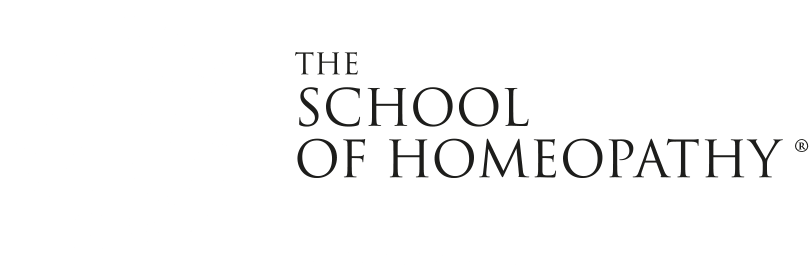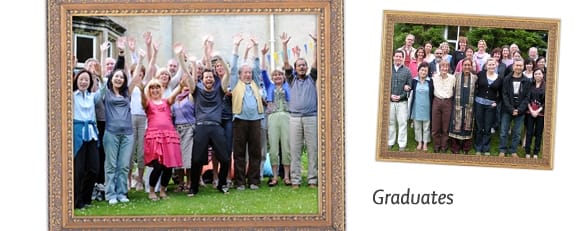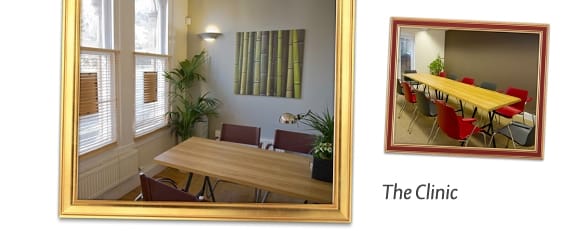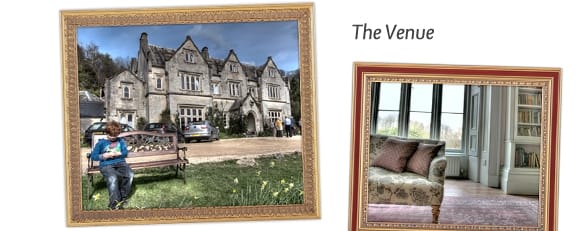

Homeopathy
Foundation
Course Content
Hahnemann and some background history of homeopathy; the law of similars; the science of homeopathic provings; the organisation of materia medica; homeopathic pharmacy; symbolic as well as medical interpretation of illness; the vital force and the vitalistic view of life; some exploration of the interactions of psyche and soma, plus: Hering's Law; recognising signs and symptoms; how to take the acute and the chronic case; knowing when to be receptive and when to be proactive and which questions to ask; perceiving what needs to be cured; symbolic as well as medical interpretations of illness; hierarchies of symptoms and evaluation of their relative importance; acute, chronic and iatrogenic diseases; susceptibility; the doctrine of polarity; homeopathic repertory; how to understand and find rubrics. Underpinning the study of materia medica is an exploration of remedy signatures.
Remedies Studied
Aconite, Arnica, Argentum Nit, Arnica, Arsenicum Alb, Aurum, Baryta Carb, Belladonna, Bryonia, Calendula, Calcarea Carb, Carbo Veg, Causticum, Chamomilla, Eupatorium, Ferrum Phos, Gelsemium, Ignatia, Ipecachuana, Lachesis, Lycopodium, Medorrhinum, Mercurius, Natrum Mur, Nux Vomica, Phosphoric Acid, Phosphorus, Pulsatilla, Rhus Tox, Sepia, Silica, Staphisagria, Sulphur, Tuberculinum.
Cases Studied
Samantha – assignment case
Mercury – example case
Eva – example case
Amanda – assignment case
Bill – assignment case
Samantha – analysis case
Anastasia – assignment case
Mary – example case
Bill – analysis case
Amanda – analysis case
Malcolm – assignment case
Malcolm – analysis case
Anastasia – analysis case
Full detail of each month is given below, with the aims and learning outcomes
1-1 September : Introduction to Homeopathy
Aims
This month aims to introduce you to the homeopathic concept of health and disease and the fundamental principles that underpin the practice of homeopathy as described by Samuel Hahnemann in his Organon of Medicine. From the first proving through to current day practice you will see how homeopathic principles have been developed. In addition, you will also be introduced to the basic tools of homeopathic practitioners, the materia medica and repertory. The study of homeopathic materia medica will be explored, how it is presented in literature and in particular to the uses of four major homeopathic remedies.
Learning Outcomes
At the end of this month you will be able to:
- Discuss the historical evolution of homeopathic principles
- Compare and contrast homeopathic concepts of health and disease with allopathic medicine
- Outline the philosophical principles upon which the practice of homeopathy is based
- Discuss the language used in homeopathic materia medica and access information about remedies from a range of homeopathic materia medica sources
- Identify the pictures and usage of four major homeopathic remedies
- Explain the language of Kent’s Repertory and clarify situations in which specific rubrics would be used
1-2 October : Provings, Pharmacy & Potentisation
Aims
This month aims to introduce you to the process of proving remedies, the source of information about homeopathic medicines and the vital work of Samuel Hahnemann in undertaking his first proving. You will also be shown the methods of homeopathic pharmacy, from the concept of potentisation to the actual process of manufacturing remedies, and see why this method is used. The study of homeopathic materia medica will be further explored, how it is presented in literature and in particular to the uses of two more homeopathic remedies. In addition, you will also be studying the repertory in further detail.
Learning Outcomes
At the end of this month you will be able to:
- Explain the purpose and process of homeopathic provings
- Discuss the pharmacy and manufacture of homeopathic remedies
- Define the concept and the purpose of potentisation
- Identify key themes and polarities of two homeopathic remedies
- Explain the language of Kent’s Repertory and clarify situations in which specific rubrics would be used
1-3 November : Language of Disease
Aims
This month aims to introduce you to the concept of symptom classification in homeopathy and the language of signs and symptoms in disease. You will be shown how to observe the language of symptoms and how they can be used to find a remedy that has the potential to improve the health of a patient. You will also learn the structure and organisation of the repertory and study how to translate patient narrative into the language of the repertory. Through the grading of symptoms and the grading of remedies you will explore the building blocks of repertorisation. In addition, you will continue your study of materia medica and the study of four more prominent homeopathic remedies.
Learning Outcomes
At the end of this month you will be able to:
- Describe the relative importance of different kinds of symptoms in a case
- Illustrate the themes and central state of four homeopathic remedies
- Identify the importance of the totality of symptoms in order to form a remedy picture
- Explain the language of Kent’s Repertory and clarify situations in which specific rubrics would be used
1-4 December : Direction of Cure
Aims
This month aims to explain how disease manifests symptoms at different levels within the body and how healing can be observed through Constantine Hering’s concept of ‘Direction of Cure’. The direction of cure will be examined from a historical perspective through the development of Constantine Hering’s theory, as well as current day understanding and usage. You will also study the materia medica in greater depth, with the study of four more prominent remedies, and be introduced to the significance of ‘delusions’ in homeopathic case taking and analysis.
Learning Outcomes
At the end of this month you will be able to:
- Explain the individual stages of the Direction of Cure
- Demonstrate how Hering’s Law will help your evaluation of cure in your future practice
- Identify the key themes and polarities of two major homeopathic remedies
- Select rubrics pertaining to a remedy
1-5 January : Homeostasis
Aims
This month aims to introduce you to homeostasis and action and reaction in relation to homeopathic healing and homeopathic remedies. You will study maintaining causes and factors in relation to homeopathic healing. You will also be introduced to Hahnemann’s concept of Psora. You will study the materia medica in further depth by looking at the different states of homeopathic remedies. Further to this you will review your knowledge of remedies so far studied in order to show an understanding of the relationship to their characteristic physical pathology.
Learning Outcomes
At the end of this month you will be able to:
- Describe the mechanisms of homeostasis and action and reaction in relation to homeopathic healing
- Describe maintaining factors and causes in relation to homeopathic healing
- Compare and differentiate between the mental, emotional and physical states of different homeopathic remedies
- Translate the language used by the patient into the language of the repertory
- Review remedies studied so far and suggest which would be most important for a first-aid kit
1-6 February : Repertorising & SRPs
Aims
This month aims to introduce you to the importance of evaluating a patient’s symptoms and how they relate to the totality of the case. You will study strange, rare and peculiar symptoms and be shown how to separate the common from the characteristic symptoms, in particular by looking at a major homeopathic remedy. You will also continue to look at themes running through remedies and be introduced to the hub and spokes method of analysing a remedy. Your study of the repertory will be taken to greater depths and you will begin to apply this knowledge by looking at an acute case.
Learning Outcomes
At the end of this month you will be able to:
- Discuss the idea of the strange, rare and peculiar symptoms
- Describe how a well chosen SRP can point to the centre of a remedy
- Identify the key themes and polarities of a major homeopathic remedy using hub and spokes
- Translate the language used by the patient into the language of the repertory
- Analyse an acute case and apply that knowledge in order to find an appropriate remedy
1-7 March : Analysing & Differentiation
Aims
This month continues the skills needed in taking a case, with an in-depth look at the repertory, translating patients language into rubrics, the meaning of rubrics and repertorising cases using paper repertory sheets. You will also look at how rubrics from Kent’s time would translate into 21st Century life. You will be incorporating the skills you have learned in identifying remedy themes and polarities into examining dreams and delusions, thus illuminating the inner states of the remedy. In addition you will also continue your study of case material and the process of accurately matching a remedy to a patient.
Learning Outcomes
At the end of this month you will be able to:
- Illustrate the key aspects of the states of two homeopathic remedies
- Differentiate between three homeopathic remedies in a particular rubric
- Translate the language used by the patient into the language of the repertory
- Analyse, repertorise and differentiate between remedies for a case and reflect upon the process
1-8 April : Taking the Case
Aims
This month aims to further develop your skills in taking a case by introducing you to the potential difficulties that can arise in the case receiving process. In particular, this includes looking at the issues of personal bias and how you as a practitioner could overcome this. You will continue your enquiry in differentiating remedies with similar symptoms by looking at a further six and continue on with your analysis of patient cases.
Learning Outcomes
At the end of this month you will be able to:
- Critically review the difficulties that arise in the case-receiving process
- Differentiate between three remedies in relation to a common theme
- Identify the causation of two remedies in relation to a remedy picture
- Analyse case findings, identify the characteristic signs and symptoms and construct a hierarchy of symptoms
1-9 May : Suppression
Aims
This month aims to familiarise you with the concept of suppression and the role it plays in relation to health and disease. You will be introduced to the issues concerning suppression in patients and how homeopathic remedies might act suppressively. You will apply this knowledge to looking at how the development of suppressed emotion can be applied to a particular remedy. You will also continue your creative analysis of materia medica and analyse another case.
Learning Outcomes
At the end of this month you will be able to:
- Outline the factors involved in suppression and how homeopathic treatment might expose this in a patient
- Relate the concept of suppression to direction of cure and homeopathic aggravations
- Illustrate the key symptoms of two homeopathic remedies
- Select rubrics pertaining to a remedy
- Analyse, repertorise and differentiate between remedies for a case and reflect upon the process
1-10 June : Introduction to Miasms
Aims
This month aims to revisit the difference between acute and chronic disease with reference to Paragraphs 72-78 of Hahnemann’s Organon and introduce you to Hahnemann’s concept of three miasms with a focus on Sychosis and Syphilis. You will also study two remedies that specifically link to the sycotic miasm. Further, you will study two more homeopathic remedies and show the process of linking remedy specifics to the general theme. You will also review the case studied in the previous month to critically evaluate your own analysis.
Learning Outcomes
At the end of this month you will be able to:
- Describe the difference the between between acute and chronic disease
- Outline sycotic miasms with relation to two homeopathic remedies
- Outline the syphiltic miasm with relation to previously study remedies
- Outline the psoric miasm previously studied
- Illustrate the key symptoms of four homeopathic remedies
- Analyse, repertorise and differentiate between remedies for a case and reflect upon the process

Homeopathy has changed my life, opened my eyes and healed me and those around me who have used it. The homeopathy course is life changing and I would recommend it to anybody who is looking for a greater understanding in life.
Rachel Melbourne, Graduate















